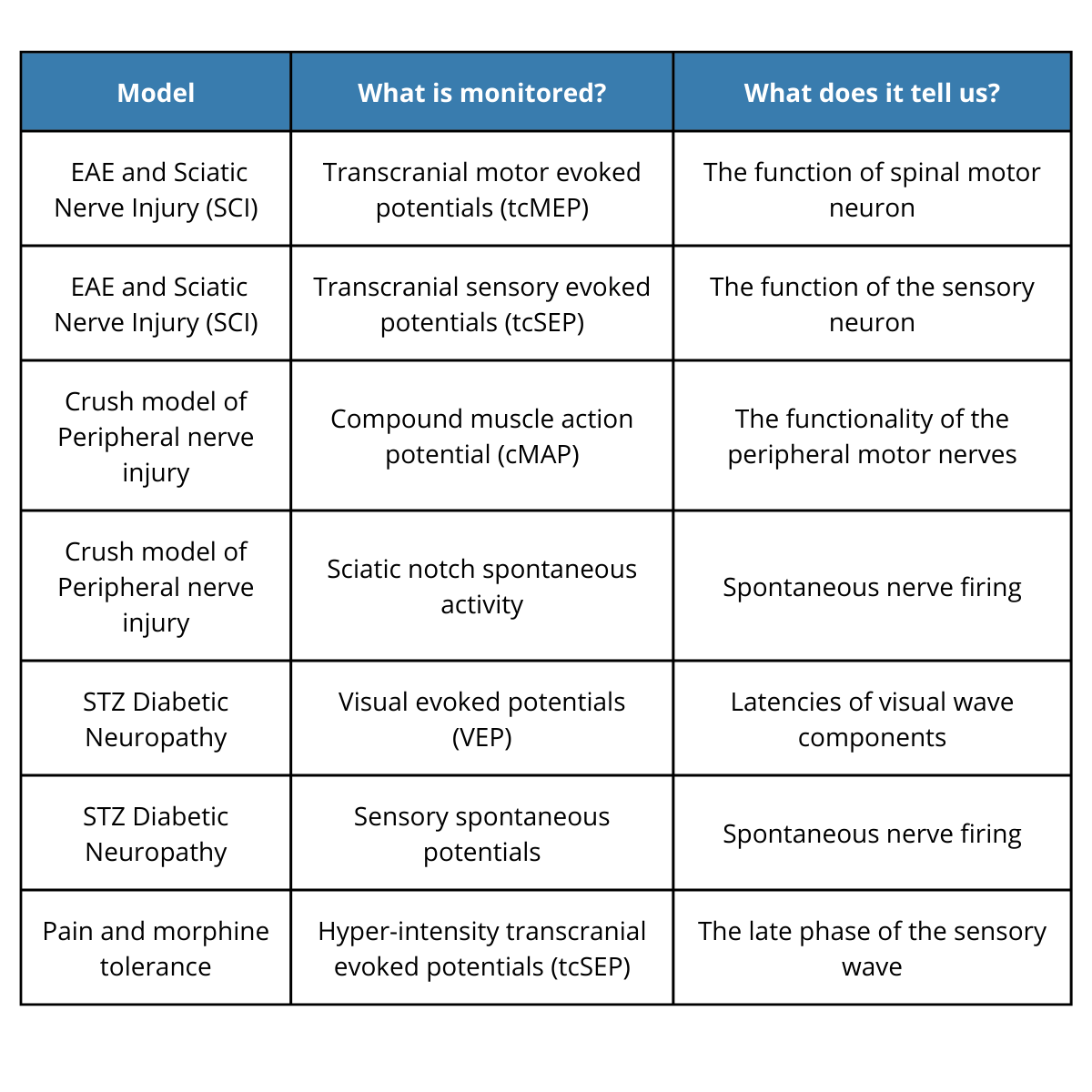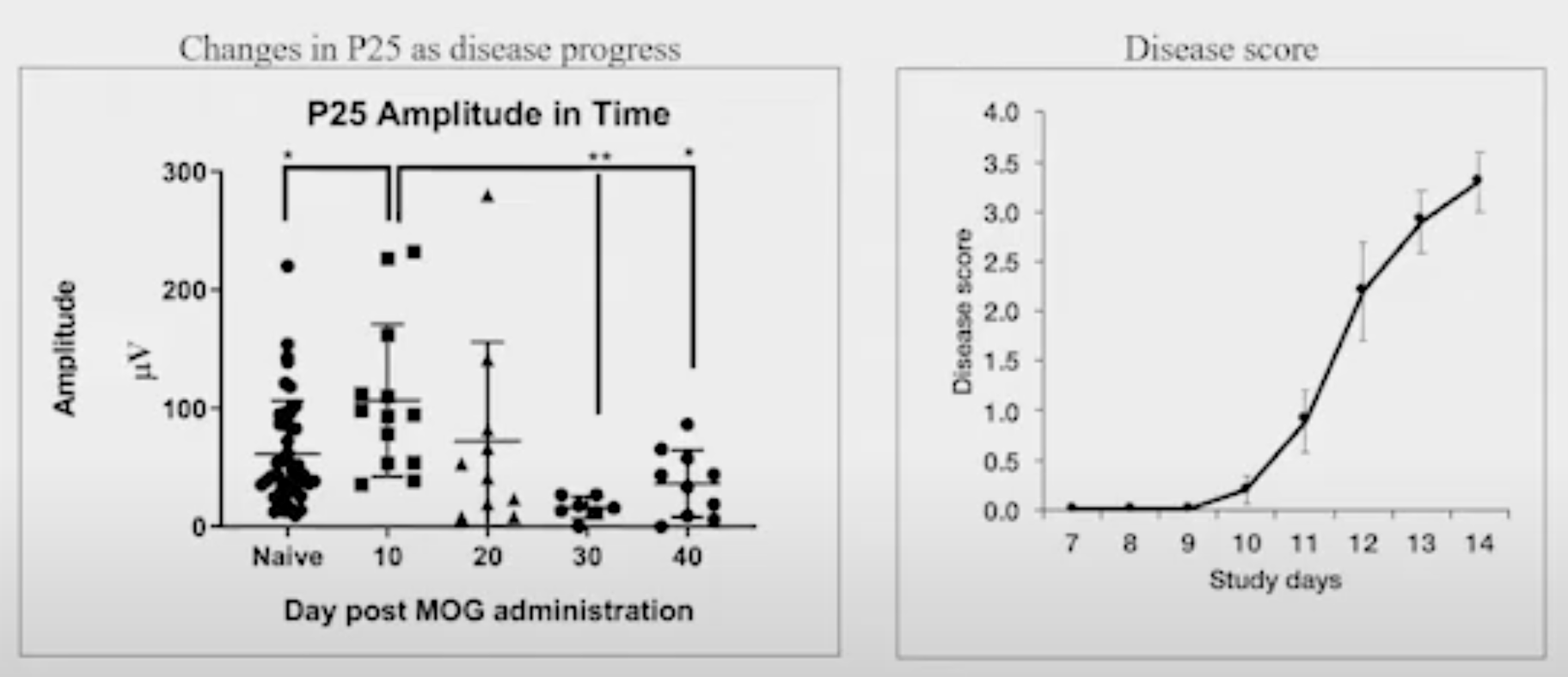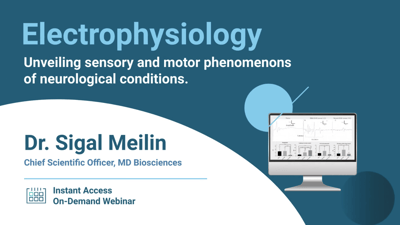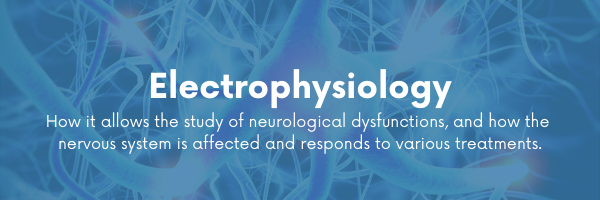Animal models are commonly used in preclinical development to mimic human disease and response. Over the past several decades, drug developers have increased their focus on biomarkers that can indicate changes in the underlying mechanisms and biological pathways. When neurological conditions and pain are involved, neuronal networks are affected making some traditional biomarkers less relevant. Electrophysiology (EP), an in vivo biomarker, provides the ability to study neurological dysfunctions, how the nervous system is affected, and how it responds to various treatments.
Electrophysiology enhances our understanding of neurological and pain indications and can be applied to various models to evaluate the function of nerves.

Case Study: Electrophysiology as a biomarker in MOG-EAE
Multiple sclerosis is a disease in which the immune system attacks the myelin sheath that covers nerve fibers. In the early stages of disease, symptoms vary, making it difficult for doctors to identify them as early stages of MS. Evidence suggests that multiple sclerosis actually starts long before the diagnosis is made.
The MOG-EAE model is commonly used for preclinical development of MS therapeutics. It is characterized by variable onset of disease and disease progression that peaks around day 14 and stays severe throughout the disease course. The severity of the disease commonly leads to paralysis and clinical scores are often unable to differentiate the effectiveness of treatment groups.
When adding electrophysiology to the study, researchers are able to see what is otherwise missed when relying on clinical scores alone. In the data example below, tcSEP is monitored using electrophysiology. We can see that on day 10, P25 nearly doubles when clinical scores are just appearing, and begins to decrease on day 20 when clinical scores are maintained.

Further learning: watch our webinar to learn more about applying electrophysiology to the MOG-EAE model.







